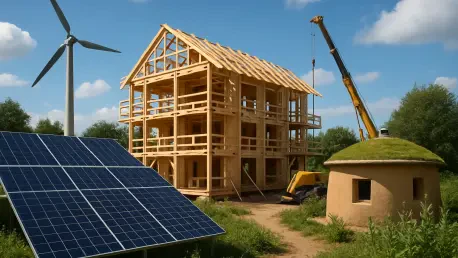I’m thrilled to sit down with Luca Calarailli, a renowned expert in construction, design, and architecture, whose passion for integrating technology into the industry has driven remarkable innovations. With a deep understanding of sustainable practices, Luca offers unique insights into how the construction sector can balance progress with environmental responsibility. In this interview, we’ll explore his perspectives on resource conservation, the role of technology in sustainable design, and the future of eco-friendly construction practices.
How did your journey in construction and architecture lead you to focus on sustainability and resource conservation?
My interest in sustainability started early in my career when I realized the massive impact construction has on the environment—think about the energy, materials, and waste involved. I’ve always believed that as architects and builders, we have a responsibility to minimize that footprint. Over the years, working on various projects, I saw how technology and innovative design could drastically cut resource use while still delivering high-quality structures. It became my mission to merge aesthetics with efficiency, ensuring that every project I touch contributes to a greener future.
Can you share a project or initiative where you’ve successfully implemented sustainable practices, and what made it stand out?
Absolutely. One project that comes to mind is a commercial building redesign where we retrofitted the entire lighting system with LEDs and integrated smart controls. It wasn’t just about swapping bulbs; we analyzed usage patterns to optimize energy savings. The result was a 30% drop in electricity costs for the client, and it felt incredible to know we were cutting down on emissions too. What made it stand out was the collaboration—working with engineers and clients to balance upfront costs with long-term gains showed me how teamwork drives sustainability.
What role do you think technology plays in transforming the construction industry toward more sustainable outcomes?
Technology is a game-changer. From energy modeling software that predicts a building’s efficiency before it’s even built to advanced materials that reduce waste, tech allows us to make smarter decisions. Take photovoltaic systems, for instance—I’ve worked on projects where solar panels were integrated into the design, producing a significant chunk of the building’s power. It’s not just about gadgets; it’s about data transparency too. Platforms that track energy use in real-time help identify inefficiencies instantly, which is critical for continuous improvement in construction.
How do you approach the challenge of balancing cost with the adoption of green technologies in your designs?
That’s always a tough one, but it’s about reframing the conversation. I focus on long-term value rather than short-term expenses. For example, using high-efficiency systems or recycled materials might cost more upfront, but I show clients the savings in energy bills or maintenance down the line. I also prioritize scalable solutions—start small with something like insulation upgrades, then build toward larger investments like renewable energy. It’s about educating stakeholders that sustainable design isn’t a luxury; it’s a necessity that pays off.
What are some of the biggest hurdles you’ve faced in pushing for sustainable construction, and how did you overcome them?
Resistance to change is a big hurdle. Many in the industry stick to traditional methods because they’re familiar, even if they’re wasteful. I’ve faced pushback on things like reusing materials or reconditioning equipment because of perceived risks. My approach is to lead with evidence—present hard data on CO2 savings or cost reductions. For instance, I once convinced a client to refurbish old machinery instead of buying new by showing that it slashed emissions by nearly 90% compared to manufacturing from scratch. Building trust through transparency has been key.
In your opinion, what’s one area in construction where we could see the most significant impact on sustainability in the coming years?
I’d say material recycling and reuse. The amount of waste from construction is staggering, and we’re just scratching the surface of what’s possible. Think about reconditioning structural components or recycling raw materials from demolished sites on an industrial scale. I’ve seen firsthand how reusing steel frames can save tons of CO2 emissions compared to producing new ones. If we can standardize these processes and make them cost-competitive, it could revolutionize how we build, cutting down on both waste and resource extraction.
What is your forecast for the future of sustainable construction over the next decade?
I’m optimistic but realistic. I think we’ll see a major shift toward net-zero buildings as regulations tighten and technology becomes more accessible. Renewable energy integration, like solar and wind, will be standard in new designs, and I expect digital tools to play a bigger role in optimizing resource use. The challenge will be retrofitting existing structures—there’s a huge stock of old buildings that need upgrades. If we can crack that puzzle with innovative financing and scalable solutions, the construction industry could become a leader in combating climate change within the next ten years.









